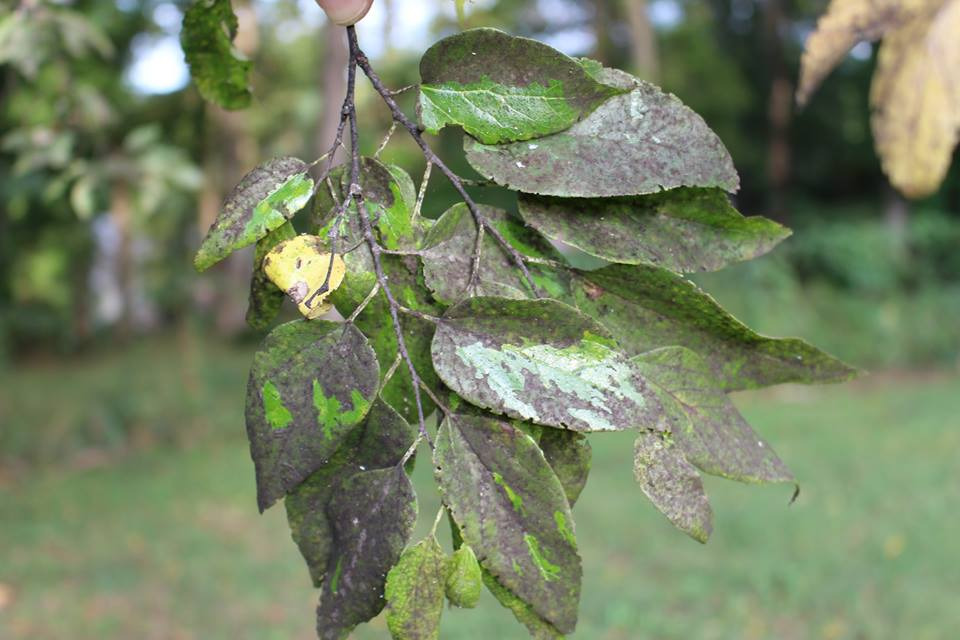Sooty mold is a common fungal issue that affects many gardeners and farmers. This dark, unsightly mold doesn’t just detract from the aesthetic appeal of your plants; it can also hinder their growth and overall health. In this article, we’ll explore what sooty mold is, how it forms, its effects on plants, and effective methods for managing and preventing it.
What is Sooty Mold?
Black mold is a type of fungus that grows on the surfaces of leaves, stems, and fruits. It appears as a black or dark brown coating, resembling soot, hence the name. While sooty mold itself doesn’t directly damage plant tissues, it can cause significant problems by blocking sunlight and interfering with photosynthesis, leading to weakened plants.
How Does Sooty Mold Form?
Dust mold forms as a result of the presence of honeydew, a sticky substance secreted by certain insects like aphids, whiteflies, mealybugs, and scale insects. These insects feed on plant sap, excreting honeydew, which provides an ideal environment for sooty mold to thrive. As the fungus grows on the honeydew, it spreads over the plant surfaces, creating the characteristic dark coating.

Effects of Sooty Mold on Plants
While sooty mold doesn’t penetrate the plant tissue, its presence can still cause several issues:
- Reduced Photosynthesis: The dark coating of sooty mold blocks sunlight from reaching the leaves, reducing the plant’s ability to perform photosynthesis. This can lead to stunted growth and reduced vigor.
- Decreased Aesthetic Appeal: Sooty mold can make plants look dirty and unhealthy, affecting the overall appearance of your garden.
- Indirect Damage: While the mold itself isn’t harmful to the plant, the presence of honeydew often indicates an infestation of sap-sucking insects, which can cause direct damage to the plant by weakening it and spreading plant diseases.
How to Control and Prevent this fungus mold
Controlling black fungus mold involves addressing the underlying issue: the sap-sucking insects that produce honeydew. Here are some effective methods to manage and prevent sooty mold:
- Control Insect Pests:
- Natural Predators: Encourage beneficial insects like ladybugs and lacewings that prey on aphids and other sap-sucking insects.
- Insecticidal Soaps: Use insecticidal soaps or neem oil to target and eliminate insect pests. Apply according to the product’s instructions, ensuring you cover the affected areas thoroughly.
- Horticultural Oils: Horticultural oils can suffocate insects and prevent them from producing honeydew.
- Remove Affected Areas:
- Pruning: Prune and remove heavily infested or mold-covered leaves, stems, and branches to reduce the spread of the mold and its underlying cause.
- Cleaning: Gently wash the sooty mold off plant surfaces using a mild soap and water solution. This is particularly useful for small plants or those with a light infestation.
- Improve Air Circulation:
- Spacing Plants: Properly space plants to ensure good air circulation, which helps reduce humidity and moisture levels that favor mold growth.
- Pruning: Regular pruning to remove excess foliage can also help improve airflow around the plants.
- Maintain Plant Health:
- Proper Watering: Water plants at the base rather than overhead to avoid creating conditions that favor mold growth.
- Fertilization: Keep your plants healthy with appropriate fertilization to strengthen their natural defenses against pests and diseases.
- Organic Fungicides:
- Baking Soda Solution: A mixture of baking soda, water, and a small amount of dish soap can be sprayed on affected plants to help control the mold.
- Copper-based Fungicides: Organic fungicides containing copper can be effective in managing sooty mold, though they should be used as a last resort after controlling the insect pests.

Long-term Prevention Strategies
Preventing sooty mold requires ongoing vigilance and good garden management practices:
- Monitor for Pests: Regularly inspect your plants for signs of sap-sucking insects. Early detection and intervention can prevent honeydew accumulation and subsequent mold growth.
- Promote Beneficial Insects: Plant flowers and shrubs that attract beneficial insects to help naturally control pest populations.
- Maintain Plant Diversity: A diverse garden is less likely to suffer from large-scale pest infestations, reducing the chances of sooty mold developing.
- Regular Maintenance: Keep your garden clean and well-maintained. Remove dead leaves and debris where insects might breed and mold could grow.
Conclusion
Sooty mold may be an unsightly problem, but with the right approach, it can be effectively managed and prevented. By controlling the insects that produce honeydew and maintaining healthy gardening practices, you can protect your plants from this common issue. Regular monitoring and proactive care are key to ensuring your garden remains vibrant and mold-free.
Remember, while sooty-mold is not directly harmful to plants, it’s a sign that your garden might need a little extra attention. Addressing the root cause will not only eliminate the mold but also improve the overall health and resilience of your plants.
